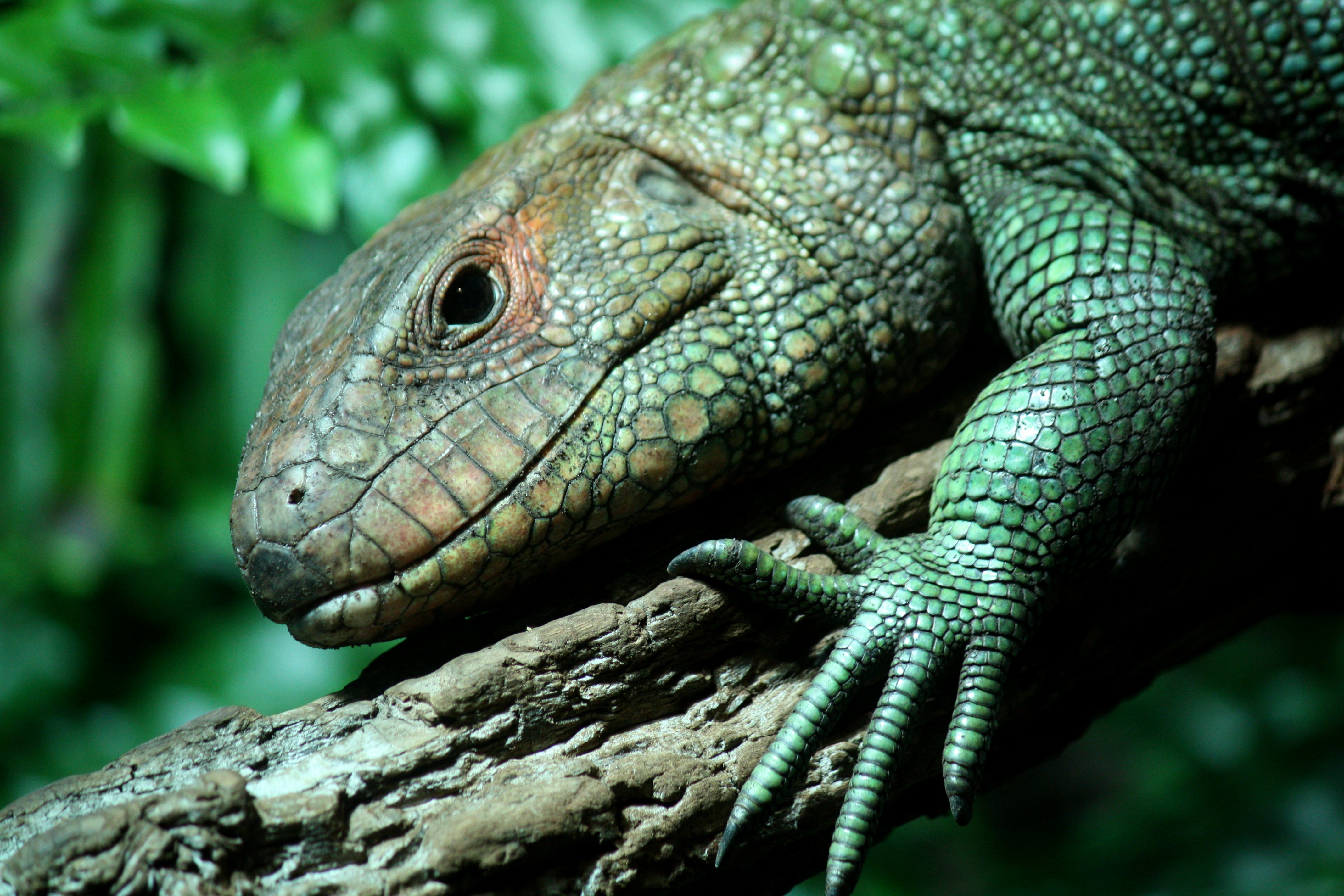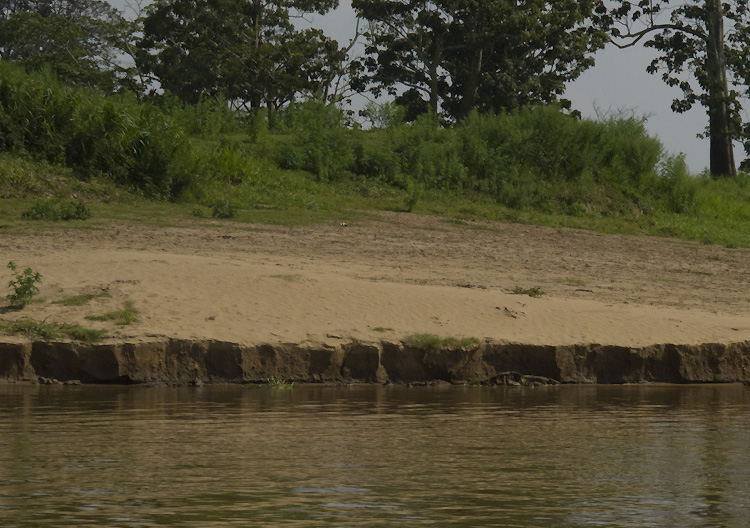|
Paradracaena
''Paradracaena'' is an extinct genus of lizards from northern South America. Fossils of ''Paradracaena colombiana'' have been found in the Honda Group of Colombia, Peru and Brazil . The species was described as a member of the tegus; ''Tupinambis huilensis'' by Estes in 1961. Description ''Paradracaena colombiana''''Dracaena colombiana'' at was first described as '' huilensis'' by Estes in 1961, later named ''Dracaena colombiana'' by Sullivan and Estes in 1997.Sullivan & Estes, 1997, p.102 These ground dwelling |
Tupinambis
''Tupinambis'' is a lizard genus which belongs to the family Teiidae and contains eight described species. These large lizards are commonly referred to as tegus (''teiús'' in Portuguese). '' T. merianae'' (Argentine black and white tegu), '' T. rufescens'' (red tegu), and '' T. teguixin'' (gold tegu) are popular in the pet trade. They are primarily found in South America, although ''T. teguixin'' also occurs in Panama. In 2012, a number of tegu species were reclassified from ''Tupinambis'' to the previously used genus ''Salvator''. The newly proposed classification comes from a restructuring of the family Teiidae based upon the study of 137 morphological characteristics. The new classification is as follows: ''Salvator duseni'' (yellow tegu), ''Salvator rufescens'' (red tegu), ''Salvator merianae'' (Argentine black and white tegu), ''Tupinambis teguixin'' (gold tegu), ''Tupinambis longilineus'' (Rhondonia tegu), ''Tupinambis palustris'' (swamp tegu) and ''Tupinambis quadrilineatu ... [...More Info...] [...Related Items...] OR: [Wikipedia] [Google] [Baidu] |
Dracaena (lizard)
The genus ''Dracaena'' (romanized form of the Ancient Greek δράκαινα - ''drakaina'', "female dragon"), also called caiman lizards or water tegus, is in the teiid family, along with tegus and ameivas. Caiman lizards are found in South America in Ecuador, Colombia, Paraguay, Peru and Brazil. These semiaquatic lizards spend a lot of time in the water and inhabit marshes, streams and flooded forests. Caiman lizards often bask on branches overhanging the water. Classification Extant Species Listed alphabetically. The Reptile Database Fossils * †'' Paradracaena colombiana'' - the Middle ...[...More Info...] [...Related Items...] OR: [Wikipedia] [Google] [Baidu] |
List Of Fossiliferous Stratigraphic Units In Colombia
Several stratigraphic units in Colombia have provided fossils. The richest formations are the Devonian Cuche and Floresta Formations, the Cretaceous Paja Formation, the Paleocene Cerrejón Formation and the Miocene La Venta site. The latter is the richest Konzentrat-Lagerstätte in northern South America and comprises the formations of the Honda Group. __TOC__ Fossiliferous stratigraphic units ''Formations are ordered according to their youngest age'' Proposed reclassification of South American gomphotheres Some authors, Lucas, Mothé, Avilla et al., propose a reclassification of the South American gomphotheres as follows:Lucas, 2013Mothé et al., 2012Mothé et al., 2016aMothé et al., 2016b * '' Stegomastodon'' is an exclusively North American genus * ''Haplomastodon'' is a South American genus, but synonymous with ''Notiomastodon'' * as ''Notiomastodon'' was defined earlier, all ''Haplomastodon'' species should be considered part of ''Notiomastodon'' * all fo ... [...More Info...] [...Related Items...] OR: [Wikipedia] [Google] [Baidu] |
Honda Group, Colombia
The Honda Group ( es, Grupo Honda, Tsh, Ngh) is a geological group of the Upper and Middle Magdalena Basins and the adjacent Central and Eastern Ranges of the Colombian Andes. The group, in older literature also defined as formation, is in its present-day type section in the Tatacoa Desert in the department of Huila subdivided into two main formations; La Victoria and Villavieja. The group was originally defined in and named after Honda, Tolima, but has been redefined based on the many fossil finds in the Tatacoa Desert, to the south. In the original type section of its occurrence, the thick group is subdivided into three formations, from old to young; Cambrás, San Antonio and Los Limones. The group dates to the Neogene period; in its broadest definition from the Late Oligocene to Late Miocene, and in the redefined type section restricted to the Laventan age of the South American Land Mammal Ages (SALMA), equivalent to the Middle Miocene Serravallian epoch. The Honda Gr ... [...More Info...] [...Related Items...] OR: [Wikipedia] [Google] [Baidu] |
Quadrate Bone
The quadrate bone is a skull bone in most tetrapods, including amphibians, sauropsids (reptiles, birds), and early synapsids. In most tetrapods, the quadrate bone connects to the quadratojugal and squamosal bones in the skull, and forms upper part of the jaw joint. The lower jaw articulates at the articular bone, located at the rear end of the lower jaw. The quadrate bone forms the lower jaw articulation in all classes except mammals. Evolutionarily, it is derived from the hindmost part of the primitive cartilaginous upper jaw. Function in reptiles In certain extinct reptiles, the variation and stability of the morphology of the quadrate bone has helped paleontologists in the species-level taxonomy and identification of mosasaur squamates and spinosaurine dinosaurs. In some lizards and dinosaurs, the quadrate is articulated at both ends and movable. In snakes, the quadrate bone has become elongated and very mobile, and contributes greatly to their ability to swallow very ... [...More Info...] [...Related Items...] OR: [Wikipedia] [Google] [Baidu] |
Type Locality (biology)
In biology, a type is a particular specimen (or in some cases a group of specimens) of an organism to which the scientific name of that organism is formally attached. In other words, a type is an example that serves to anchor or centralizes the defining features of that particular taxon. In older usage (pre-1900 in botany), a type was a taxon rather than a specimen. A taxon is a scientifically named grouping of organisms with other like organisms, a set that includes some organisms and excludes others, based on a detailed published description (for example a species description) and on the provision of type material, which is usually available to scientists for examination in a major museum research collection, or similar institution. Type specimen According to a precise set of rules laid down in the International Code of Zoological Nomenclature (ICZN) and the International Code of Nomenclature for algae, fungi, and plants (ICN), the scientific name of every taxon is almost a ... [...More Info...] [...Related Items...] OR: [Wikipedia] [Google] [Baidu] |
Pebas Formation
The Pebas Formation is a lithostratigraphic unit of Miocene age, found in western Amazonia. The formation extends over , including parts of Brazil, Peru, Ecuador and Colombia.Wesselingh et al., 2006 It is interpreted as representing the deposits of a lake ("Lake Pebas") or series of lakes, formed within the foreland basin of the Andes mountain belt. It is known for its abundant fossil ostracods and molluscs and an unusually diverse group of crocodylians.Sala Gismondi et al., 2006 Fossil content Correlations Laventan Huayquerian References Bibliography * * * Further reading * {{cite LSA , first=P. , last=Antoine , first2=J.A. , last2=Abello , first3=S. , last3=Adnet , first4=A.J. , last4=Altamirano Sierra , first5=P. , last5=Baby , first6=G. , last6=Billet , first7=M. , last7=Boivin , first8=Y. , last8=Calderón , last9=Candela and J. Chabain, F. Corfu, D. A. Croft, M. Ganerød, C. Jaramillo, S. Klaus, L. Marivaux, R. E. Navarrete, M. J. Orliac, F. Par ... [...More Info...] [...Related Items...] OR: [Wikipedia] [Google] [Baidu] |
Solimões Formation
The Pebas Formation is a lithostratigraphic unit of Miocene age, found in western Amazonia. The formation extends over , including parts of Brazil, Peru, Ecuador and Colombia.Wesselingh et al., 2006 It is interpreted as representing the deposits of a lake ("Lake Pebas") or series of lakes, formed within the foreland basin of the Andes mountain belt. It is known for its abundant fossil ostracods and molluscs and an unusually diverse group of crocodylians.Sala Gismondi et al., 2006 Fossil content Correlations Laventan Huayquerian References Bibliography * * * Further reading * {{cite LSA , first=P. , last=Antoine , first2=J.A. , last2=Abello , first3=S. , last3=Adnet , first4=A.J. , last4=Altamirano Sierra , first5=P. , last5=Baby , first6=G. , last6=Billet , first7=M. , last7=Boivin , first8=Y. , last8=Calderón , last9=Candela and J. Chabain, F. Corfu, D. A. Croft, M. Ganerød, C. Jaramillo, S. Klaus, L. Marivaux, R. E. Navarrete, M. J. Orliac, F. Par ... [...More Info...] [...Related Items...] OR: [Wikipedia] [Google] [Baidu] |
Amazon Basin (sedimentary Basin)
The Amazon Basin is a large sedimentary basin (620,000 square kilometres (240,000 sq mi)) located near the middle and lower course of the Amazon River, south the Guiana Shield and north of the Central Brazilian Shield. The basin developed on a rift that originated about 550 million years ago during the Cambrian. Location The Amazon Basin is located south of the Guiana Shield, north of the Central Brazilian Shield, east of the Solimões Basin, and west of the Marajó Basin. It is bound to the west by the Púrus Arch and in the east by the Gurupá Arch. The basin has an elongated shape with a WSW-ENE orientation. Its long axis runs from the vicinity of Manaus to the area near the confluence of Xingu River with the Amazon River. Evolution of the Basin The Amazon Basin was developed on a rift, called the Sub-Amazonal Rift, that originated about 550 million years ago during continental collision of the West African Craton. Parts of the rift were reactivated during the openi ... [...More Info...] [...Related Items...] OR: [Wikipedia] [Google] [Baidu] |
Miocene
The Miocene ( ) is the first geological epoch of the Neogene Period and extends from about (Ma). The Miocene was named by Scottish geologist Charles Lyell; the name comes from the Greek words (', "less") and (', "new") and means "less recent" because it has 18% fewer modern marine invertebrates than the Pliocene has. The Miocene is preceded by the Oligocene and is followed by the Pliocene. As Earth went from the Oligocene through the Miocene and into the Pliocene, the climate slowly cooled towards a series of ice ages. The Miocene boundaries are not marked by a single distinct global event but consist rather of regionally defined boundaries between the warmer Oligocene and the cooler Pliocene Epoch. During the Early Miocene, the Arabian Peninsula collided with Eurasia, severing the connection between the Mediterranean and Indian Ocean, and allowing a faunal interchange to occur between Eurasia and Africa, including the dispersal of proboscideans into Eurasia. During the ... [...More Info...] [...Related Items...] OR: [Wikipedia] [Google] [Baidu] |
Smithsonian Institution
The Smithsonian Institution ( ), or simply the Smithsonian, is a group of museums and education and research centers, the largest such complex in the world, created by the U.S. government "for the increase and diffusion of knowledge". Founded on August 10, 1846, it operates as a trust instrumentality and is not formally a part of any of the three branches of the federal government. The institution is named after its founding donor, British scientist James Smithson. It was originally organized as the United States National Museum, but that name ceased to exist administratively in 1967. Called "the nation's attic" for its eclectic holdings of 154 million items, the institution's 19 museums, 21 libraries, nine research centers, and zoo include historical and architectural landmarks, mostly located in the District of Columbia. Additional facilities are located in Maryland, New York, and Virginia. More than 200 institutions and museums in 45 states,States without Smithsonian ... [...More Info...] [...Related Items...] OR: [Wikipedia] [Google] [Baidu] |
Fossilworks
Fossilworks is a portal which provides query, download, and analysis tools to facilitate access to the Paleobiology Database The Paleobiology Database is an online resource for information on the distribution and classification of fossil animals, plants, and microorganisms. History The Paleobiology Database (PBDB) originated in the NCEAS-funded Phanerozoic Marine Pale ..., a large relational database assembled by hundreds of paleontologists from around the world. History Fossilworks was created in 1998 by John Alroy and is housed at Macquarie University. It includes many analysis and data visualization tools formerly included in the Paleobiology Database.{{cite web, title=Frequently asked questions, url=http://www.fossilworks.org/cgi-bin/bridge.pl?page=FAQ, publisher=Fossilworks, access-date=17 December 2021 References {{Reflist External links {{Wikidata property, P842 * [Baidu] |

.jpg)

.jpg)


